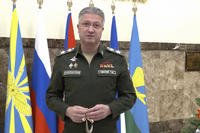The Army is battling to find ways to reshape its modular brigades and redefine how it fights future wars. The battle is being played out during this year's Unified Quest wargame, which is being fought over a notional country that some might think looks a lot like Colorado.
While none of this is likely to have immediate effect (it may start affecting budgets in 2014) Unified Quest is aimed at reshaping doctrine -- how the Army fights -- and it will likely lead to changes in the brigade structure. There are three panels fighting the war game. One is debating doctrine; the second is considering how brigades should be organized; the third is taking a larger strategic view.
The Army faces a basic problem on the structure front. It won't get more people any time soon so if it wants to restructure it must either take people from the corps or division levels to beef up the brigade structure, or it must rebuild the brigades in new ways -- or a bit of all three.
Addressing modularity -- which is the term of art for the current structure is fraught with challenge. How big a deal was the modular Army? This is how the Congressional Research Service summarized it this way: "In what the Army describes as the 'most significant Army restructuring in the past 50 years,' it is redesigning its current active duty division force to a 48 brigade combat team (BCT) force." Making changes to such big changes will attract keen congressional oversight and generate enormous debate in the senior reaches of the Army. After all, the Army will continue fighting in Iraq and Afghanistan for some time -- and must also be ready to deploy for security emergencies and natural disasters (and major wars) while giving troops the time they need to recover from deployments.
I heard from a number of participants at Unified Quest deep concerns about the service's ability to sustain itself over time in the face of these challenges. They are also struggling to figure out what the new doctrinal approaches being debated -- Combined Arms Maneuver and Wide Area Security -- actually fix and how they might improve the service's ability to fight and win the nation's wars, be they against hybrid forces, insurgencies or a major theater war.








